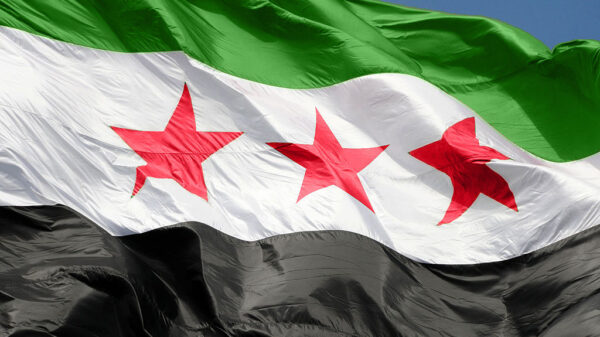Staff Writer Emily Ng observes the intricate national and geopolitical implications awaiting Syria after the fall of the Assad Regime.
Government forces topple with one lightning offensive. Captives run free on the streets. The ruler of a crumbling regime flees into hiding. The streets of the capital city ring with joyous celebration.
Since the 1960s, the Assad dynasty has been known to be one of the most intolerant states in the Middle East, with hundreds of thousands of political prisoners. On 8 December 2024, key opposition groups such as the Hayat Tahrir al-Sham (HTS) and the Syrian National Army (SNA) captured Damascus, the capital of Syria. Assad’s government military forces quickly collapsed, and Assad fled to claim asylum in Moscow.
Humanitarian need in Syria during the last leg of Assad’s rule rose to its highest since 2011; food prices skyrocketed, government subsidies for food and fuel declined, and Syrian infrastructure was terribly damaged. According to the World Bank, the Syrian economy had shrunk by 54% from 2010 to 2021, with the Assad government relying on trade in the drug captagon as one of the most valuable sectors in the economy.
Recounting the pain that the people had suffered under the previous regime, Mona Rafea delivered a shuddering first-hand account of the liberation of Homs, a city in western Syria. She described the state of joy, waiting, and fear that embroiled the city as it eagerly anticipated news of a rebel takeover:
“Every home in Homs has a story of a family member who has disappeared, been displaced, or been martyred.”
Mona Rafea for The Guardian
Reuters cited this development as “one of the biggest turning points for the Middle East in generations.” The HTS top rebel commander Ahmed al-Sharaa, who fought under the assumed name of Abu Mohammed al-Jolani, announced that “a new history” was being written, making Syria “a beacon for the Islamic nation.”
So it would appear that the rebellion has liberated the Syrians at last. However, the situation is far from resolved.
The reality of continued turmoil
Several armed groups continue to vie for control, while global powers attempt to assert their influence. Two days after Damascus was captured, rebels took control of Deir al-Zour, an eastern city previously captured by Syrian Kurdish troops. Meanwhile, the Turkish-backed SNA, along with HTS, are actively expanding towards areas controlled by the US-backed, Kurdish-led Syrian Democratic Forces (SDF), which include important oil fields.
Moreover, humanitarian need remains high. Pressure from neighboring countries is also mounting, as they seek to return Syrian refugees.
Even Rafea, in her glowing and hopeful account of the Syrian liberation, alludes to fears for what the future may hold: “Decades of injustice and oppression can’t be deconstructed overnight.”
The current governing body and its next steps
Al-Sharaa, the leader of the HTS, has appointed a new transitional government. This represents the resolve to prevent a power struggle between armed groups, as well as to provide basic services to civilians, such as electricity, water sewage and internet. Mohammed al-Bashir, the leader of the Syrian Salvation Government (SSG), has been chosen to head this new ‘caretaker government’ until 1 March, 2025.
In 2017, the SSG was created by the HTS to consolidate control in Idlib, the urban stronghold of rebel forces since the uprising of 2011. This has caused experts to be concerned that HTS is moving to replace the Assad dynasty with a new tyrannical regime.
The SSG, however, has been shown to be important to civilian well-being. When public services were halted in Aleppo following its capture by rebel forces, SSG helped to restore them, with technicians repairing electricity networks and medics volunteering at local hospitals.
According to Robin Yassin-Kassab, an expert on Syrian and Middle Eastern affairs, the transitional government should follow the recommendations of UN Security Council Resolution 2254. This involves implementing a defined limit to the transitional period, during which an inclusive body will draft a constitution and prepare for elections under UN supervision. Only then will HTS gain political legitimacy among Syrian citizens and global spectators. Yassin-Kassab remarks:
“It remains to be seen if this is the beginning of a power grab by HTS and HTS-aligned civilian bodies.”
Due to the dire Syrian economy and years of prolonged sanctions by the EU and the US, experts believe that the promise of sanction relief may incentivise HTS to share power and enact political reforms.
Antony Blinken, the United States former Secretary of State, says that their recognition of the new government and provision of sanctions relief depend on whether or not HTS can respect human rights, fulfil civilian needs, and build inclusive governance. He maintains, however, that it is unclear if the emerging regime can meet these conditions.
This is particularly the case after a report was published last year on human rights practices in Syria, which found that HTS had “permitted confessions obtained through torture and executed or forcibly disappeared perceived opponents and their families.” UK Prime Minister Keir Starmer has also said that it is too early to reconsider the HTS’s categorisation as a terrorist organisation.
HTS’s message
Al-Sharaa is keen to repaint HTS in a more moderate light in order to lift global sanctions and receive international acceptance. He said that HTS did not target civilians and had long split off from its roots in Al-Qaeda, and should not therefore be considered a terrorist organisation.
He is adamant on distinguishing the political changes in Syria from the developments in Afghanistan, insisting on his belief in constitutional rule and women’s education. In fact, in an interview with the BBC, he depicted HTS to be in complete opposition to the previous autocracy, stating: “The victim and the oppressor should not be treated in the same way.” Al-Sharaa further calls for Syrian unity, the protection of minorities, and the disbanding of rebel factions.
As the world watches on, global powers and local civilians hope that the new regime will take on a more constitutional and representative route. Western and Arab powers continue to call for an ‘inclusive, non-sectarian and representative government’ that responds to the rights and needs of Syria’s diverse populations. However as the situation stands, and as various media outlets are sure to clarify, there are plenty of doubts surrounding the new regime that have yet to be dispelled.
As the transitional government of Syria makes its first tottering steps towards a constitutional democracy, the wide-reaching network of global powers begins to unfold, revealing the things they have to risk – or to gain – in light of recent events. The tale of a rebellion against the iron-fisted oppressor, a tale as old as time, is riddled with far more interests and tensions than it may stand to appear.
International reactions as Syria undergoes political change
Turkey
Turkey and Syria have long been engaged in a difficult diplomacy, as Turkey has unsuccessfully negotiated for the return of Syrian refugees. With the fall of Assad, this situation may potentially be resolved, making Turkey the ‘most likely beneficiary’ of the rebellion.
Despite these new advantages, Turkey continues to train, equip, and fund the Syrian National Army (SNA), an opposition group that helped capture Damascus leading up to the fall of Assad in early December. With the help of the SNA, Turkey has actively opposed the US-backed Syrian Democratic Forces (SDF), a group linked to the Kurdistan Workers’ Party (PKK), which has instigated revolts in Turkey for the rights of ethnic Kurds.
After the fall of Assad, Turkish-backed fighters continued to wrest territory from the control of the SDF. Turkey hopes to create a buffer zone to prevent an autonomous Kurdish region from being established on its border. So, if Turkey stands to benefit the most from the fall of Assad, the Kurds “stand to lose the most,” in the words of Fawaz Gerges, an LSE professor of international relations.
This directly pits Turkey against the US, despite the fact that they are both members of NATO. With a chief priority being the deconstruction of Kurdish forces, Turkey’s Defense Minister, Yasar Guler, has voiced his expectations of their ‘American friends’ to reconsider their support for the SDF.
The United States
Despite Turkey’s concerns surrounding the Kurdish-led SDF, the United States continues to fund and support the organisation. Fears that the Islamic State (IS) is ‘on pace to more than double the total number of attacks’ have strengthened their need for an alliance with the SDF. After all, the SDF has proved to be reliable in this respect, having fought the IS jihadists from 2014 – 2017, and continuing to this day to detain hundreds of thousands of IS fighters. Blinken has voiced to Turkey that allowing Kurdish forces to continue fighting IS is crucial, as Syria is in a vulnerable state of transition.
Meanwhile, the US has spoken directly with HTS, the rebel group, displaying a determination for increased communication and diplomacy. HTS’s origins in al-Qaeda has so far alienated the US; however, Washington has recently declared that it will remove a 10 million dollar bounty for al-Sharaa, showing a new willingness to engage with HTS.
More than ten years since the US first closed its embassy in Damascus during Syria’s civil war, American diplomats recently arrived in Syria. Besides hoping to gain insight as to the whereabouts of Austin Tice, a journalist who disappeared in Syria in 2012, they also hope to discuss Syria’s ‘vision for the future’ and ‘how the US can help support them’.
However, with the recent American presidential election of Donald Trump, neither their support for the Kurdish population nor their designation of HTS as a terrorist group is likely to continue with full force. It is clear that Trump does not want to be heavily involved in the Middle East, especially with his attempt to withdraw US forces supporting the Kurds during his first term.
Iran and Israel
For Iran, the overthrow of Assad does not bode well. The ‘axis of resistance’, an alliance coordinated by Iran to oppose Israel, has been significantly destabilised. Besides Iraqi militias, Hezbollah, Hamas, and the Houthis, Assad was a key player in this network. Without him, a significant land route from Iran to Lebanon has been cut, preventing Iran from sending weapons to its allies, and effectively weakening Hezbollah and Hamas. This has caused much of the Arab world to be concerned with the prospect of more instability alongside the Gaza war.
The newly weakened ‘axis of resistance’, however, does not seem to soothe Israel’s concerns. Following the overthrow of Assad, Israel quickly moved to occupy the UN buffer zone next to Syria. As of 19 December, the Israel Defense Forces (IDF) have carried out 498 attacks on Syrian military assets and chemical weapons facilities, in what it says to be a pre-emptive measure against possible attacks.
Despite these demonstrations of extreme caution, Israeli Prime Minister Benjamin Netanyahu acknowledges Israel’s role in the defeat of the Syrian dictator. Indeed, Israel’s conflict with Iran and the Lebanese Hezbollah had severely weakened Assad’s allies, contributing to his downfall.
The abrupt overthrow of the Assad dynasty and the sudden implementation of a transitional government in Syria has caused the scrambling global powers to adjust to the new dynamic. World powers are hurrying to revive diplomacy with Syria: German delegates meet with Ahmed al-Sharaa, the rebel leader, and French diplomats raise their flag at their Damascus embassy for the first time in over a decade. It has also deeply affected the positions of Turkey, the United States, and Iran, who seek to influence the domestic and foreign affairs of Syria. Yet, this turbulent time is also a time of hope, a chance of new beginnings for a country that has been suffocated by a cruel dictatorship for over half a century.

















